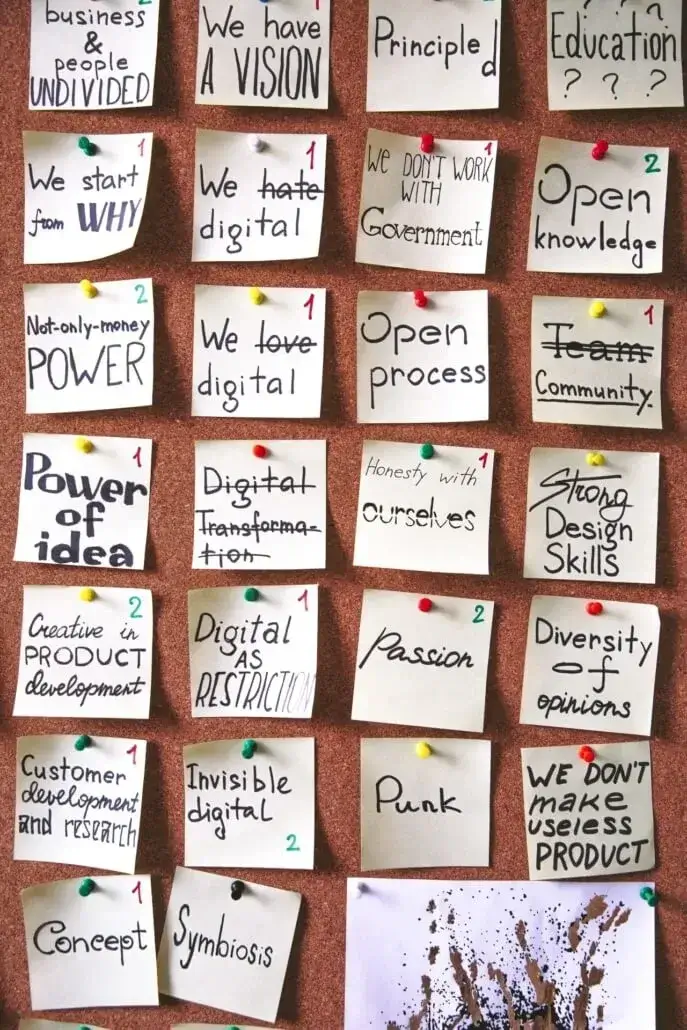Originally published August 1, 2022 , updated on April 22, 2025
Building a successful subscription business means turning first-time sign-ups into loyal, long-term subscribers. The subscription model runs on recurring revenue, but if your customers aren’t sticking around, that revenue quickly dries up. And here’s the kicker: churn rates for subscription businesses are often higher than you might expect. For many companies, it’s normal to lose 5% to 10% of their subscribers every month. That’s a lot of customers slipping through the cracks.
So, why is retention such a struggle? It usually comes down to a few key issues: inconsistent engagement, a lack of personalization, clunky onboarding experiences, and missing the mark when it comes to anticipating what users actually want. When customers feel neglected or frustrated, they leave. Scaling becomes a lot tougher when you’re constantly replacing lost subscribers.

But here’s the good news: working with a content marketing agency helps tackle these problems head-on. By crafting smart, tailored content strategies, they help subscription businesses boost retention, drive conversions, and build experiences that keep people coming back. Whether it’s SEO optimization, personalization, engagement tactics, continuous analysis, or conversion-focused strategies, a well-executed plan can turn things around.
“Whether you’re running a SaaS platform, a streaming service, or a subscription box company, these tactics can help you thrive in a crowded market.”
1. Reducing Churn and Building Lasting Relationships
Churn is a frustrating challenge for subscription businesses. For SaaS companies especially, battling high churn rates is a top priority. When subscribers leave, it’s both lost revenue and a missed chance to build long-term relationships that drive growth. High churn rates can make it feel like you’re constantly chasing new customers just to stay in the same place.
Content marketing agencies help businesses keep their subscribers around by creating genuine connections and delivering value at every stage of the customer journey. Their approach covers everything from welcoming new subscribers to keeping them engaged and making them feel understood.
Onboarding That Sets Subscribers Up for Success
First impressions count. When new subscribers don’t feel confident using your product from the start, they’re more likely to cancel. Content marketing agencies create onboarding experiences that guide subscribers through the essentials with clarity and simplicity.
This could mean providing easy-to-follow tutorials, step-by-step guides, webinars, or well-organized FAQs that help new users find their footing. A SaaS company, for example, might benefit from a series of onboarding emails that introduce features gradually over the first month. Instead of overwhelming new users, this approach gives them time to explore and appreciate the product at their own pace.
By making the early stages of the customer journey as smooth and helpful as possible, agencies help subscribers feel supported and confident.
Keeping Subscribers Engaged and Interested

Onboarding is just the beginning. Keeping subscribers interested means delivering value consistently and staying connected. Agencies do this by creating fresh content that keeps subscribers invested. Regular updates, helpful articles, troubleshooting resources, and newsletters all play a role in keeping customers engaged.
Agencies also use data to stay one step ahead. They look for signs that subscribers are losing interest or running into trouble, and then respond with helpful resources before the problem gets worse. For example, if a streaming service notices viewers abandoning certain types of content, an agency might recommend new shows or features that match their interests more closely.
Proactive engagement like this keeps subscribers from feeling neglected and helps maintain their interest over the long term.
Making Communication Personal
People respond best to content that feels relevant. Agencies help businesses connect with their audience by tailoring messages to fit different groups of subscribers. This could involve segmenting subscribers by their preferences, habits, or demographics and then creating content that speaks directly to them.
The goal is to make subscribers feel seen and understood. For example, if a fitness app notices a user frequently engaging with strength training content, sending them tips and articles related to their interests makes them feel valued.
When subscribers see that you understand what they care about, they’re more likely to stick around. Whether it’s through targeted emails, customized recommendations, or personalized onboarding, content that feels relevant helps build loyalty.
2. Boosting SEO and Visibility
Great content doesn’t matter if no one can find it. For subscription businesses, getting your message in front of the right people is just as important as crafting that message in the first place. Content marketing agencies make sure your content shows up where it matters—search engines, social media feeds, and other key platforms.
“Visibility drives growth, and SEO is at the heart of making your content accessible. Agencies use proven strategies to help your business stand out and attract new subscribers.”
Finding Opportunities Through Keyword Analysis
Agencies start by figuring out what your audience is searching for. This goes beyond just throwing a few keywords into your content. They dig into keyword gaps by comparing your existing content against competitors to find areas where you could rank higher.
For example, a subscription fitness app might not be targeting high-volume search terms like “workout plans for beginners” or “strength training tips.” An agency identifies these gaps and builds content around them, capturing traffic that your competitors are missing.
When you target the right keywords, you attract more visitors who are already interested in what you offer.
Building Authority Through Topic Clustering
Ranking for a single keyword isn’t enough. Agencies build topical authority by creating clusters of related content that all point back to a central, comprehensive piece. This structure helps search engines understand that your site is a trusted resource on a specific topic.
For a subscription-based e-learning platform, this might mean creating a cluster of articles about online learning strategies, each linking back to a central guide on “How to Maximize Your Online Learning Experience.”
This interconnected structure makes your content more visible and increases the chances of your audience finding exactly what they need.
Adapting to Changing Search Trends
SEO isn’t static. Search engines are constantly changing, and so are your subscribers’ habits. Agencies track performance using tools like Ahrefs, SEMrush, and Moz to see what’s working and what isn’t.
They also keep an eye on emerging trends, like the rise of voice search or changes in how people search for information on mobile devices. By staying flexible and adapting to these shifts, agencies ensure your content stays visible even as the digital landscape evolves.
“Attracting traffic is one thing, but attracting the right audience? That’s where real growth happens. Effective SEO brings in visitors who are ready to stick around and become loyal subscribers.”
3. Personalization and Engagement

Subscribers want more than just great content—they want content that feels relevant, timely, and tailored to their interests. When people feel understood, they’re far more likely to stay loyal. Content marketing agencies excel at making those connections by crafting personalized experiences that speak directly to different segments of your audience.
Creating relevant, engaging content isn’t a guessing game. Agencies use data to understand who your subscribers are, what they care about, and how they interact with your brand. Then, they build strategies designed to deliver the right message at the right time.
Understanding Your Audience
Effective personalization starts with understanding who you’re trying to reach. Agencies dig into your audience’s demographics, behavior, preferences, and past interactions to build accurate profiles. Instead of blanketing everyone with the same message, they craft content that resonates with specific groups.
For instance, if a subscription meal kit service notices a segment of users consistently ordering plant-based options, it makes sense to send them recipes, tips, and offers related to vegan and vegetarian dishes. Tailoring content this way helps subscribers feel seen and valued.
Segmentation also helps agencies identify high-risk users who might be on the verge of canceling. Recognizing those patterns early means you can respond with targeted content that addresses their pain points before they decide to leave.
Creating Personalized Content
Personalization goes beyond using someone’s name in an email. It’s about delivering real value based on what each subscriber cares about. Agencies create customized newsletters, targeted blog posts, special offers, and curated recommendations to keep your audience engaged.
Imagine an online learning platform with subscribers spread across various skill levels. Rather than sending everyone the same content, an agency could develop tailored learning paths based on each user’s progress and interests. Beginners get foundational tutorials, while advanced users receive cutting-edge strategies and tips.
When subscribers feel like your content is built specifically for them, engagement goes up. They’re more likely to open your emails, click through to your website, and stick around for the long haul. Creating a content strategy that nurtures the relationships and maintains ongoing engagement is essential for building loyalty. A good content marketing agency knows how to make that connection feel personal and meaningful, creating experiences that resonate and encourage loyalty.
Using Interactive Content to Boost Engagement
Keeping subscribers engaged often means mixing things up. Agencies use a variety of content formats to keep things fresh, from videos and infographics to polls, quizzes, and live webinars.
People scroll past around 3,000 online messages a day, so cutting through the noise isn’t easy. Interactive content is particularly effective because it invites subscribers to participate rather than passively consume information. A subscription fitness app, for example, might use quizzes to recommend the best workout plans based on users’ goals and preferences.
Agencies also monitor engagement metrics to see what works and what doesn’t. When they spot a winning approach, they double down. When something falls flat, they pivot. It’s all about staying responsive and evolving with your audience.
“Subscribers expect content that feels personal and relevant. When you meet those expectations, engagement improves, loyalty strengthens, and churn rates drop.”
4. Tracking, Analysis, and Continuous Improvement
Creating great content is only part of the puzzle. To keep subscribers around, you need to know what’s working, what isn’t, and how to adapt. The best content marketing agencies never stop tracking, analyzing, and improving their approach. They treat content strategy as a living process that changes as your audience’s needs evolve.
Metrics matter, but not all metrics are equal. Agencies dig into engagement data to pinpoint the actions that actually drive results, like click-through rates, time spent on pages, content shares, subscription renewals, and conversion rates. It’s about finding patterns and understanding what makes subscribers tick.
Using Data to Shape Strategy
Agencies use a mix of tools like Google Analytics, Ahrefs, SEMrush, and Moz to gather insights about how subscribers interact with your content. Are they engaging with newsletters but ignoring your blog posts? Are certain articles generating high traffic but low conversions? Knowing the answers to these questions makes all the difference.
For instance, a subscription-based wellness app might find that while their articles about meditation tips attract readers, their tutorials on advanced breathing techniques convert more subscribers. With that insight, they can double down on content that turns readers into loyal users.
Data also helps agencies understand when subscribers are starting to drift away. A sudden drop in email open rates or a spike in cancellations can be a red flag. Agencies track these patterns and respond quickly to get things back on track.
A/B Testing and Experimentation

No strategy is perfect from the start. Agencies use A/B testing to fine-tune their approach. This means testing different versions of content to see what resonates best—whether it’s a headline, call-to-action, email format, or entire marketing funnel.
Maybe one version of an onboarding email generates more clicks than another. Or perhaps a certain layout gets more eyes on your most important content. By comparing results and making adjustments, agencies keep your strategy sharp and effective.
Testing isn’t just about improving what’s already there. It’s also about experimenting with new formats, messaging styles, and delivery methods to find what makes subscribers engage more deeply.
Continuous Improvement Through Feedback Loops
Listening to your audience is just as important as analyzing metrics. Agencies actively gather feedback from subscribers through surveys, direct interactions, user-generated content, and social media monitoring. They pay attention to what your subscribers are saying and adapt accordingly.
For example, if subscribers consistently mention a desire for more video content, an agency will adjust the strategy to include more videos. When subscribers feel heard, they’re more likely to stay engaged and loyal.
“The most effective content strategies are never static. They’re dynamic, adaptable, and always evolving based on what the data and audience feedback reveal.”
5. Driving New Sign-Ups and Conversions

Attracting new subscribers is just as important as keeping the ones you already have. While reducing churn helps maintain steady growth, driving new sign-ups is essential for expanding your subscription business. Content marketing agencies use a variety of strategies to make sure your message reaches the right people and convinces them to take action.
Growth isn’t just about getting more eyes on your content. It’s about making sure those eyes belong to the people who are most likely to become loyal subscribers.
Creating Effective Calls-to-Action (CTAs)
The best content in the world won’t convert if your calls-to-action don’t hit the mark. Agencies know how to create CTAs that feel natural, relevant, and persuasive. They pay attention to placement, wording, design, and timing to maximize clicks and conversions.
Rather than just throwing a “Sign Up Now” button at the end of every piece of content, agencies use specific, engaging language that speaks to your audience’s needs. For example, a streaming service might use CTAs like “Start Your Free Trial” or “Explore New Releases” to appeal directly to viewers’ interests.
Agencies also test multiple versions of each CTA to find out what works best. Sometimes, a small tweak—like changing a button’s color or rephrasing the message—can make a noticeable difference in conversion rates.
Leveraging Lead Magnets to Capture Interest
Attracting new subscribers often starts with giving something valuable away for free. Agencies create lead magnets designed to pull in potential subscribers who are genuinely interested in what you offer.
These could include eBooks, webinars, exclusive videos, templates, free trials, or access to gated content. The key is to make sure your lead magnets are relevant to your audience and provide immediate, tangible value.
For example, a SaaS company offering project management tools might create a downloadable guide on “10 Productivity Hacks for Remote Teams.” The content is valuable on its own, but it also serves as a natural gateway to encourage users to try the platform.
“Agencies then promote these lead magnets across various channels like your website, social media, newsletters, and even paid ads to reach a wider audience.”
Optimizing for Multi-Platform Visibility
People don’t just consume content on one platform. Agencies make sure your content is optimized for wherever your audience spends their time.
This might involve repurposing content to suit different platforms. For example, a long-form article about your product’s features could be broken down into a series of social media posts, an infographic, a short video, and even video ads that capture attention quickly and drive traffic back to your site. By diversifying your content, agencies help your brand stay visible and relevant across multiple touchpoints.
They also monitor performance on each platform, identifying which channels drive the most traffic and conversions. Armed with that information, they double down on what works and refine or drop what doesn’t.
Tracking Conversions and Making Adjustments
Driving sign-ups is an ongoing process. Agencies track key metrics like click-through rates, conversion rates, bounce rates, and user behavior patterns to understand what’s working and where there’s room for improvement.
When a particular strategy isn’t delivering the desired results, agencies don’t just leave it alone. They refine the approach, test new ideas, and continually optimize until they find what clicks with your audience.
The goal is always the same: attract the right subscribers and make the sign-up process as seamless and appealing as possible.

Conclusion & Call-to-Action
Growing a subscription business is about more than just attracting new customers—it’s about creating lasting relationships that keep them coming back. Professional content marketing services help make that happen by delivering the right messages to the right people at the right time.
They reduce churn by creating smooth onboarding experiences, offering continuous education, and building personalized communication strategies that make subscribers feel seen and valued. They boost your visibility through smart SEO practices that ensure your content reaches the audience it’s meant for. And by tracking performance and making adjustments based on real data, they keep your strategy fresh and effective.
The real magic happens when all these pieces work together. When your content is tailored to your audience’s needs, when your messaging is clear and consistent across platforms, and when your engagement tactics are rooted in genuine connection, your subscription business becomes more than just a service—it becomes a trusted part of your subscribers’ lives.

At Goodman Lantern, we understand the challenges of building a successful subscription business. Our content marketing strategies are designed to help you reduce churn, attract the right subscribers, and create experiences that drive long-term loyalty.Ready to take your subscription business to the next level? Get in touch with us today to see how we can help you grow.
Post Views: 1184


















